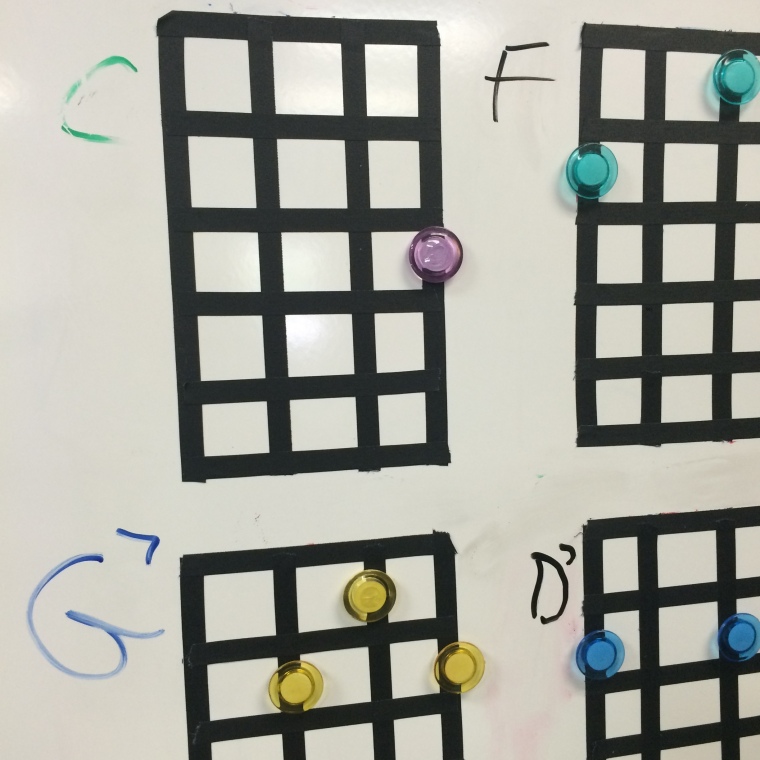Welcome! If you’re reading this site, chances are you have some sort of interest in ukuleles in schools. Maybe you’re a classroom teacher who happens to play ukulele, and finds ways to use it in your room once in a while. Maybe you’re a school music teacher, who has developed a ukulele program for your school (like me). Or maybe you think ukuleles may have a place at your school, but need inspiration and help getting started.
Whatever your school ukulele interest may be, welcome. My hope is to offer insights based on what we’ve learned at my school, and offer a place for other school ukulele people to share their experiences. I look forward to creating a School Ukulele Community here.
Our Ukulele Story: I teach music at a small private school in the Los Angeles area. After years of being a K-5th school, we began to expand into older grades, first adding a 6th grade class. At that point, I wanted the new 6th graders doing something cooler than just playing recorders and other activities the younger grades did. So we tried guitars with them for a year, and that was OK, but then I got the idea to try ukuleles. From that point, things began to explode.

Now, almost four years later, we are a K-8th school and every student from 3rd grade and older has an opportunity to learn the ukulele. Our older students can borrow a ukulele for the school year and bring it in once a week for a ukulele class. Our younger students take advantage of our classroom set of ukuleles, and spend several days every six weeks or so learning chords and putting them into songs.

We still do things other schools do in music – play recorders, sing songs, choir, percussion instruments, watch videos, play electronic keyboards and study music history. But you can’t miss the ukuleles; even if that’s not what your class is doing at the moment, they’re always around, hanging on the wall or sitting on a shelf. We let kids borrow them. It’s not uncommon at lunch to see kids playing ukuleles outside with their friends.
Oh I should point out – in almost four years of putting ukuleles into kids’ hands, we haven’t lost one ukulele yet. We haven’t lost any kids either.
In the coming weeks and months, I look forward to learning and posting your ukulele school experiences, and learning together how to keep putting this crazy little instrument into our schools.

 My apologies for the delay in new posts…. too many school events going on, most of them non-ukulele related. Anyway, I wanted to share a quick idea I’ve been using in my classroom for the past year.
My apologies for the delay in new posts…. too many school events going on, most of them non-ukulele related. Anyway, I wanted to share a quick idea I’ve been using in my classroom for the past year.
 At my school, I see music classes for about a half hour at a time. If I’m teaching ukulele during that half hour, I’ll typically spend about 15 minutes going through the chords and rhythm for a particular song first (slowly), and then I’ll show a video of someone playing that song (Ukulele Underground, Ukulele Mike, or others). Of course, the chords used in the video match what I’ve just shown them.
At my school, I see music classes for about a half hour at a time. If I’m teaching ukulele during that half hour, I’ll typically spend about 15 minutes going through the chords and rhythm for a particular song first (slowly), and then I’ll show a video of someone playing that song (Ukulele Underground, Ukulele Mike, or others). Of course, the chords used in the video match what I’ve just shown them. Last week I stumbled upon a way to help 3rd graders feel more confident in their playing. We were playing “You Are My Sunshine” in the key of C, using
Last week I stumbled upon a way to help 3rd graders feel more confident in their playing. We were playing “You Are My Sunshine” in the key of C, using 


